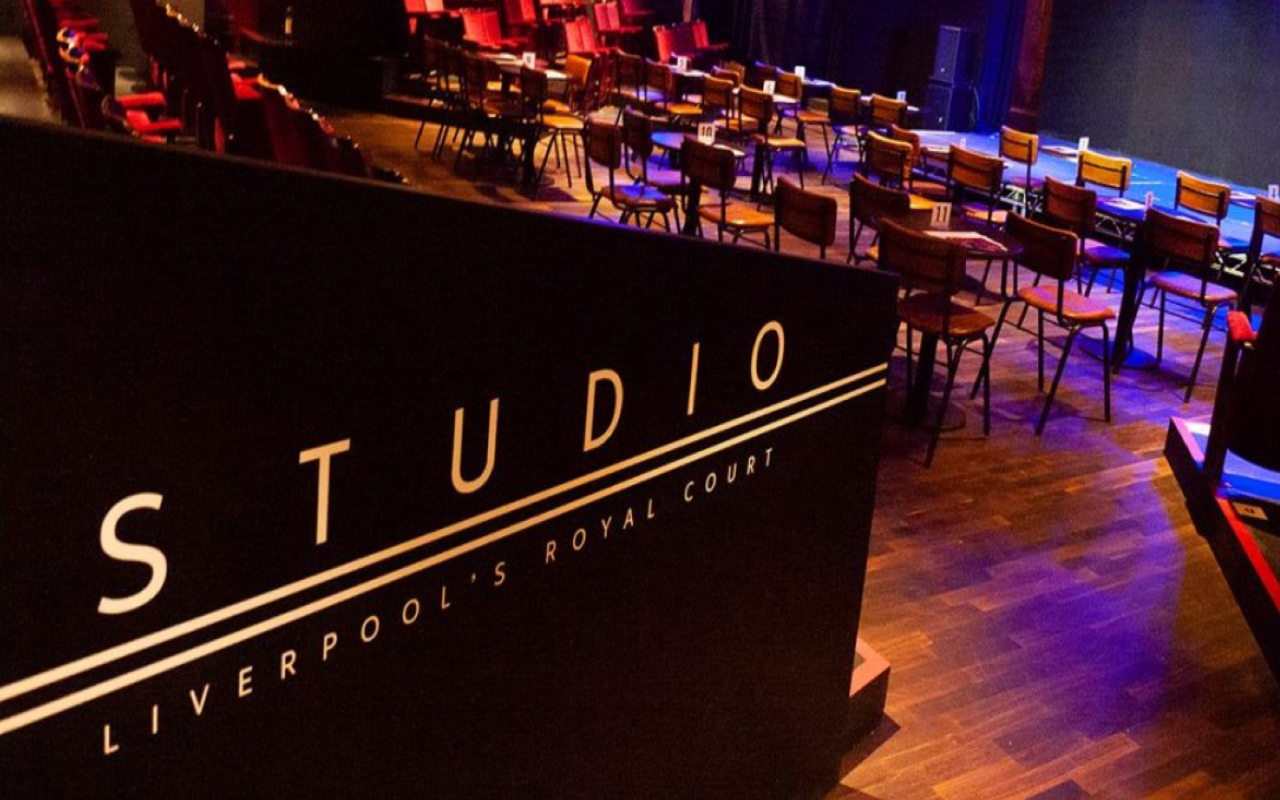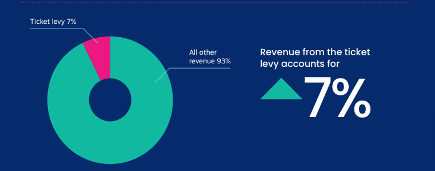
Studio Liverpool's Royal Court
The ticket levy
Using a ticket levy as part of a capital campaign can generate much needed funds. Lucy Costelloe argues the benefits.
Incorporating a ticket levy as part of its refurbishment campaign has generated over £1 million in additional funding for Liverpool’s Royal Court. Arts & culture organisations need to adapt to cover their rising costs while also enduring their recovery from the pandemic. Hesitance towards inside charges and levies is behind us.
Recognised as a leading production house, before 2018 Liverpool’s Royal Court didn’t receive any funding from the Arts Council of England or the local authority. Over the years, the team has had to look at every aspect of the theatre to identify new strategies to derive more income*. They now successfully utilise a levy to instigate their redevelopment funding.
Revenue from ticket levy for redevelopment
Previously they utilised a voluntary donation and implemented a pre-ticket donation box in their audience members’ booking cart. While the pre-ticked prompt was working well, their team didn’t feel it encouraged audience members to make additional contributions to their other campaigns such as Adopt a Seat. So, they decided to introduce a restoration donation levy within the price of each ticket sold.
From inside charges set up through Ticketsolve, Liverpool’s Royal Court has generated over £1 million. This revenue is being used in two ways: to redevelop the building, as well as to provide evidence of match funding for funding bodies who require them to raise partial sponsorship themselves.
The redevelopment funding led to the development of a new 150-seater studio venue with better dressing rooms for actors and backstage staff.

To levy or not?
Ticket fees and levies were a big topic of strife in 2013 when the Play Fair on Ticket Fees campaign was launched. While passing on booking fees is a much more widely accepted expectation, organisations need to reconsider their outlook on ticket levies.
Introducing a simple £1 per ticket won’t obscure you ticket prices drastically and wrapping it up in the ticket – so that it’s not added to the customers’ cart at the last minute – means you’re not drawing attention to it as an additional charge but rather as an amount contributed per ticket to your development or fundraising cause.
Lantern Presents create and provide experiences such as festivals, street spectacles and music and comedy gigs. From Spiegeltents to town squares, comedy clubs to cathedrals, their offering gives customers memories. Their oath is to be better than the expectation of the customer always and their events are entirely unique.
Brian Byrne, Director of Lantern Presents says that incorporating a pricing strategy that includes a small contribution charge from each ticket sold will not only enable his organisation to cover the cost of the salary of one full-time team member, but it will also transform their forward planning.
Rising cost of living is a major threat
The soaring cost of living is impacting everyone. From young to old, non-profit to profit, the costs of building maintenance and fuel are just two of the factors that carry a threat of potential collapse of creative organisations on their paths to recovery. Edinburgh Fringe Festival has warned that the rising costs of accommodation during the festival season puts the annual programme under immense pressure and poses a wider risk to the future of the festival, which is central to the ecosystem for venues, producers and artists from all over the world.
In this context, the ticket levy is a crucial revenue stream for organisations lacking the economics expertise to compare inflation rates with ticket pricing models. When was the last time your venue increased the price of a ticket? When was the last time you experienced an increase in price within another sector?
Netflix, for example, is increasing its monthly subscription rates for new and existing customers by nearly 6% for premium level subscriptions. It has promised subscribers that the increase in premium and basic packages will allow them to continue investing in the quality of their service and provide exceptional customer satisfaction.
Be honest with your fanbase
The key to introducing changes to ticket structure is to communicate clearly and provide clarity on where the additional revenue generated from your development fund will be spent.
While there are multiple approaches, the best responses and snippets of feedback are received when organisations keep it simple and straightforward for their customers. Introducing a simple £1 per ticket towards a development fund won’t obscure your pricing structures dramatically. What’s more, it won’t cause major alarm to bookers the way a percentage add-on might. No one wants to see an odd sum appear in their bank statements.
Your audience members are your loyal fanbase. They support you during the best and the worst of times. If you’re clear on how this additional stream of funding will secure the sustainability of your organisation for the foreseeable future, they will understand that their contribution makes an honest difference.
Lucy Costelloe is Head of Marketing at Ticketsolve.
![]() www.ticketsolve.com
www.ticketsolve.com
![]() @ticketsolvers
@ticketsolvers
*www.ticketsolve.com/resources/case-study-liverpools-royal-court/
This article is part of a series of articles, case studies and industry insights looking at the power of data to inform strategic decision making.
Join the Discussion
You must be logged in to post a comment.